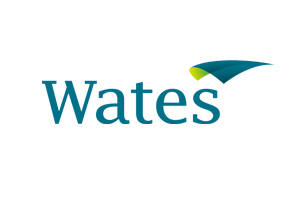Empty Homes – making the most effective use of the void period
The penultimate session of our Empty Homes Programme, facilitated by Debbie Larner, was titled Safe and Decent Homes, and the group considered how to make the most effective use of the void period.
Sarah Davis, Senior Policy and Practice Officer at the Chartered Institute of Housing opened the session with a run through of the Government’s consultation on reforms to social housing allocations, which ends on 26 March.
The proposal aims is to replace overarching national eligibility tests with a UK connection test for new allocations, as well as a two-year local connection.
She asked the group for feedback on the potential impact on the management of the empty homes process, and how housing providers can meet the requirements without extending the process.
The policy introduces a number of additional administrative burdens for local authorities, which will in turn impact on housing associations where a high volume of lettings are through the nominations process, she said, without addressing the problem, which is that we simply don’t have enough social housing that people can access and afford.
The CIH is inviting members to contribute to its formal response. Feedback should be emailed to policyandpractice@cih.org by 15th March.
Energy management of empty homes
Darren Ypey, Co-founder and Director of TSM Void Energy Service followed with a presentation outlining some of the problems faced by landlords in relation to empty properties and energy, talking through potential solutions to speed up the process, saving time and money.
He explained that social landlords “lose” £101m per year dealing with energy related issues for empty properties, due to the time it can take to restore power, remove debt from pre-payment meters, deal with energy billing issues etc, all of which cause delays in being able to relet the property.
He explained how using a void energy service provider can help to overcome some of these issues by restoring power from faulty meters on the same day, notifying energy suppliers to remove energy billing issues and debt, and removing pre-payment debts with a new electric key and gas card sent directly from the property’s energy service provider.
IoT technology
Tony Cubitt, National Sales Director at Vericon Systems, talked about the value of using technology in social housing and taking the opportunity to install environmental sensors etc while a property is empty.
“The concept of remotely understanding how a building is performing isn’t new,” he said. “It happens in in most commercial and public buildings, and the reason for that it’s to allow effective management of that particular building, and to try and save money and make it ultimately compliant and safe. So, what we’re trying to do here is exactly the same sector same, but for domestic buildings.”
“We’re in the middle of a technological revolution,” explained Tony, adding that remote monitoring and IoT sensor tech can help to provide information that ultimately can be used to protect assets, determine risk levels within those assets, and maintain compliance, as well as supporting landlords to provide better overall services and support to residents.
He talked through various products and explained the benefits of introducing technology such as environmental sensors to empty properties, including:
- Incoming resident/s likely to be more receptive to the pre-installed tech.
- Landlords can nip future problems in the bud.
- The system will get a baseline, which can be used for future analytics and comparisons.
- No access issues.
- Less interruption for the incumbent residents.
Using the void period effectively
The meeting rounded off with a breakout session on using the void period effectively led by Richard Mardle, Client Relationship Director, at the Wates Group.
Attendees split into three groups to discuss:
- What can realistically be done when a home is empty?
- What are the barriers to this happening?
- How can those barriers be broken down to ultimately provide a better value and more customer centric service to residents?
The groups highlighted that works such as EPC certification, full property inspections and stock condition surveys, decarb works and the installation of technology could be carried out in empty properties but barriers can include budget, lack of oversight, the varying commercial natures of contracts, SLAs and turnaround timescales to relet a property, and key safes and accessibility.
It was concluded that these could be overcome by removing silo working, regular meetings attended by all departments, utilising consistent components that meet all necessary legislative requirements for all replacements, aligning with asset management and planned programmes, and ensuring that properties meet the Decent Homes Standard.
The sixth and final session of our Empty Homes programme, will take place on Thursday 14th March from 10am to 12noon.
Titled “Futureproofing Empty Homes” it will cover how to create sustainable tenancies without compromising re-let times.
Register your place here.
































